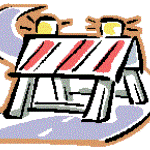 There’s always something fascinating going on when it comes to the economy. Take China, for instance. According to the International Monetary Fund, and the notion of purchasing power parity, they’re the world’s largest economy.
There’s always something fascinating going on when it comes to the economy. Take China, for instance. According to the International Monetary Fund, and the notion of purchasing power parity, they’re the world’s largest economy.
Nonetheless, they’ve started the year off in a rut. For example, China’s exports fell 3.3 percent in January from a year ago. But that was nothing. Imports dropped 19.9 percent.
“The slide in imports is the sharpest since May 2009,” explained Reuters, “when Chinese factories were still slashing inventories in reaction to the global financial crisis. The dismal trade performance will increase concerns that an economic slowdown in china – originally considered a desirable adjustment away from an investment-intensive export model toward one based on domestic consumption – is at risk of derailing.”
Here at the Economic Prism we didn’t know China’s economy was still at risk of derailing. Didn’t their economy derail some time ago? Any economy that used 6.6 gigatons of cement between 2011 and 2014 is effectively FUBAR. By comparison, the U.S. used 4.5 gigatons of cement over the last 100 years.
Obviously, these dismal trade numbers signal that something is awry. Perhaps the solution to the economic problem isn’t more cement after all. This may be why Chinese policy officials have officially panicked…
More Chinese Stimulus on the Way
Last week, in case you missed it, the People’s Bank of China cut bank reserve requirements by a half percent. This, in effect, will increase the quantity of money circulating in the economy. In theory, this should increase demand and consumption.
Compared to the United States and Europe, China is booming. The country’s GDP increased at a rate of 7.4 percent in 2014. This, however, is the slowest growth China’s had in 24 years.
In today’s crazy paper money economies, supported by perpetually increasing debt, just a slowdown in the rate of growth can have dramatic consequences. Decisions have been made based on assumptions that are wrong. Servicing debt may not be feasible if increases in growth do not match what was anticipated.
Of course, cheapening the price of money is always the central bankers go to play to stimulate the economy. Cheaper money means businesses and people can take on greater debt burdens. They can borrow more money and they can consume more at a lower rate of interest. This, among other things, is exactly what’s expected of China’s central bank…
“Economists generally expect the central bank to cut reserve ratios one or two more times this year and lower interest rates again, in addition to pumping more funds into the system as it struggles to bring down persistently high funding costs which are putting further strains on debt-laden Chinese companies.”
China’s Concrete Problem
Certainly it is expected the People’s Bank of China will further stimulate the economy. So, too, it is very likely they will. But the result may be something very different than what people expect or want.
For what’s expected and what ultimately happens are two different things entirely. It is commonly believed that more credit will give the economy a boost. But what happens if the economy has already been grotesquely disfigured by too much debt?
“The Chinese economy is addicted to construction, and its rulers can’t seem to let go—-even as they recognize they are heading straight toward the wall,” said David Stockman, former Congressman and Director of the Office of Management and Budget under President Reagan.
“At the present time, nearly 50 percent of GDP is accounted for by fixed asset investment—–that is, housing, commercial real estate, industry and public infrastructure. This ratio is so far off the historical and comparative charts as to be in a freakish class all of its own. Even during the peak “take-off” phase of economic development in Japan and South Korea this ratio never exceeded 30 percent and did not dwell there for long, either.
“So China is caught in a monumental debt trap. Its rulers fear social upheaval unless they keep pumping GDP—and the associated rise of jobs, incomes and financial asset values—-with more credit and construction. Even then, they know better and have therefore hop-scotched from credit restraint to credit curtailment almost on alternate days of the week.”
Clearly China’s got a problem…and there’s no turning back. They must pour concrete…it’s their only hope.
Sincerely,
MN Gordon
for Economic Prism




